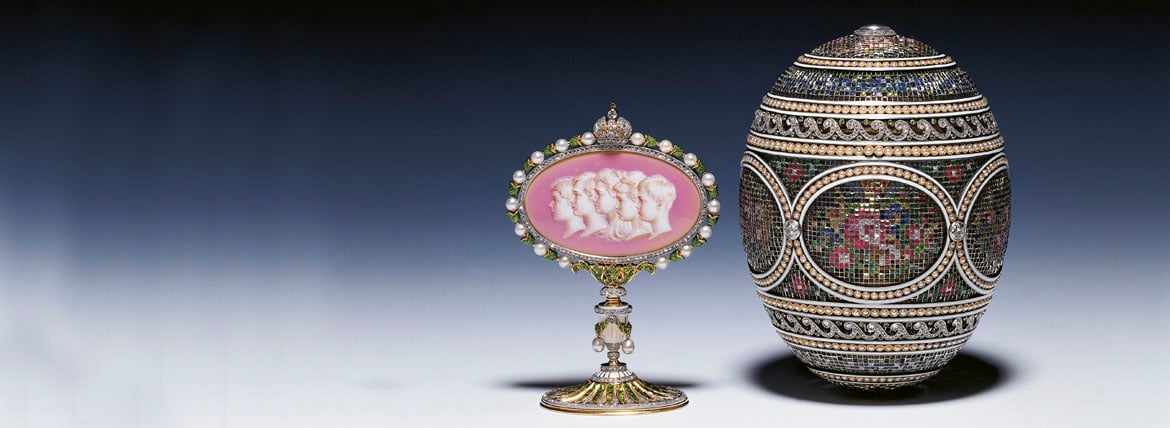
Fabergé in the Royal Collection
An introduction to Fabergé in the Royal Collection
1. Fabergé: The Artist-Jeweller
Peter Carl Fabergé was born in St Petersburg on 30 May 1846, the son of a master goldsmith. As a young man he served apprenticeships in Frankfurt, Florence and Paris, before taking over his father's jewellery firm in 1872. He quickly transformed the business into a large enterprise with several separate workshops, each overseen by a dedicated workmaster.
At the firm's height, Fabergé employed some five hundred craftsmen – a vast number which reflected the exceptionally labour-intensive nature of his creations. The company was particularly renowned for its intricate hardstone carvings and for the use of precious stones and transparent (guilloché) enamel to embellish coloured gold.
In 1882 Fabergé won a gold medal at the Pan-Russian Exhibition in Moscow, where he attracted the attention of the new Tsar, Alexander III (1845-94), and his wife, Marie Feodorovna (1847-1928). Three years later, in 1885, the firm was awarded a warrant as official supplier to the imperial court. It was then that the Tsar commissioned Fabergé to produce the first Imperial Easter Egg, starting an annual tradition which would showcase some of his most inventive and sophisticated craftsmanship.
With the award of the Grand Prix at the 1900 Exposition Universelle in Paris, Fabergé stepped fully onto the international stage. He soon opened branches in Odessa (1900), London (1903) and Kiev (1905), and strengthened ties with some of his most important patrons – the British royal family.
Fabergé's career nevertheless came to an abrupt end with the Russian Revolution. In 1917, the Tsar and his family were imprisoned and their property confiscated. The following year, Fabergé closed his St Petersburg headquarters and emigrated to Switzerland. He died there on 24 September 1920.







